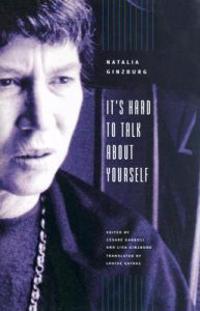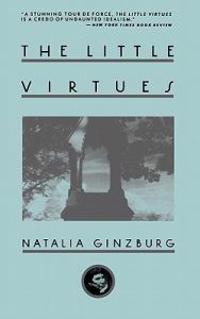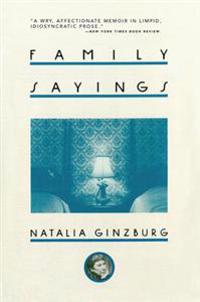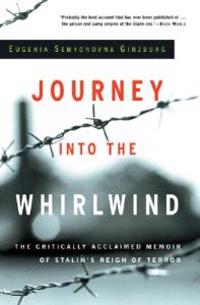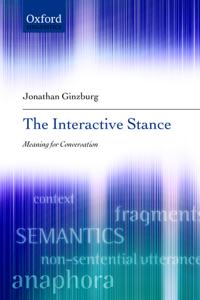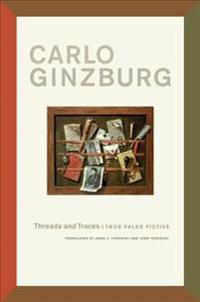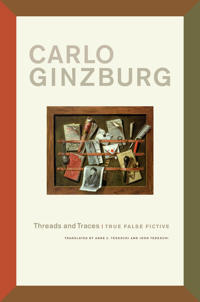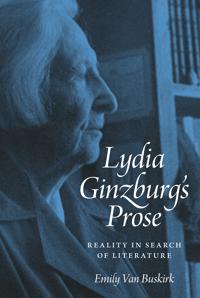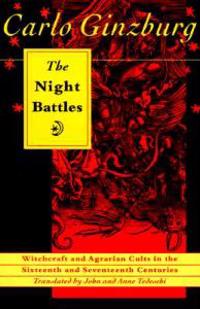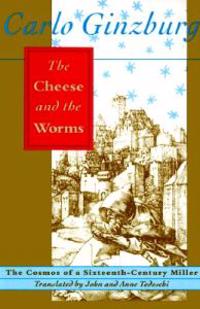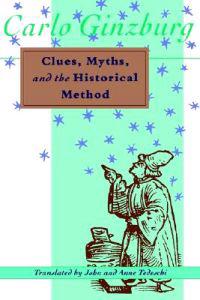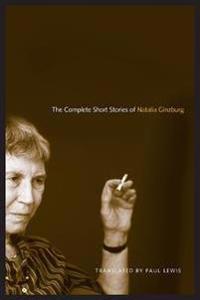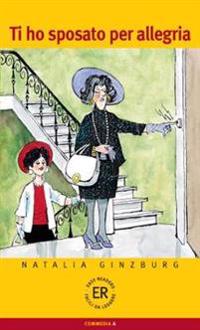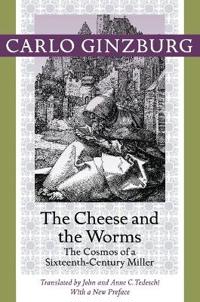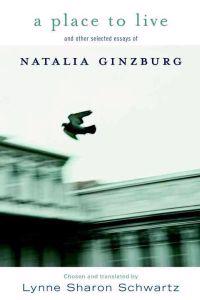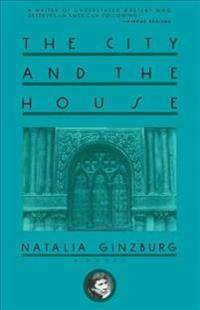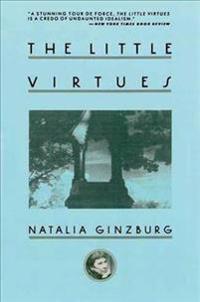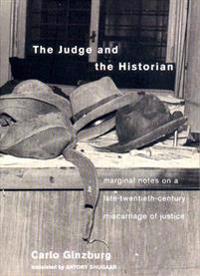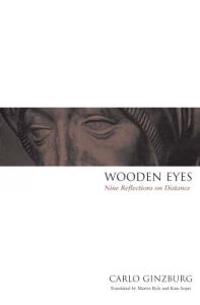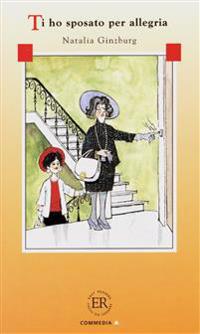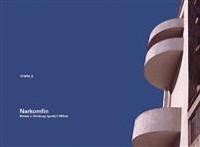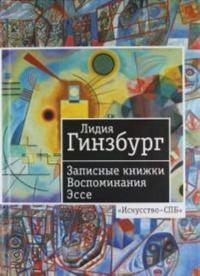It's Hard to Talk About Yourself (Inbunden)
avNatalia Ginzburg, Cesare (EDT) Garboli, Lisa (EDT) Ginzburg
ISBN: 9780226296883 - UTGIVEN: 2003-05Natalia Ginzburg, arguably the most important woman writer of postwar Italy, always spoke of herself with irrepressible modesty. The woman who claimed she "never managed to climb up mountains" in fact wrote the history of 20th-century Italy through more than 20 books, chronicling fascism, war and th[...]
Ecstasies: Deciphering the Witches' Sabbath (Häftad)
avGinzburg, Carlo Ginzburg
ISBN: 9780226296937 - UTGIVEN: 2004-06Weaving early accounts of witchcraft--trial records, ecclesiastical tracts, folklore, and popular iconography--into new and startling patterns, Carlo Ginzburg presents in" Ecstasies compelling evidence of a hidden shamanistic culture that flourished across Europe and in England for thousands of year[...]
Family Sayings (Pocket)
avNatalia Ginzburg, D. M. (TRN) Low, Natalia Ginzburg
ISBN: 9781611457964 - UTGIVEN: 2013-08Hailed upon publication as a groundbreaking memoir, giving the form "a new dimension, new possibilities, and . . . an aspect that is entirely new" ("Times Literary Supplement"), " Family Sayings" is Natalia Ginzburg's masterpiece and a classic of contemporary Italian literature. Although it asks to [...]
Journey Into the Whirlwind (Häftad)
avEugenia Semyonovna Ginzburg
ISBN: 9780156027519 - UTGIVEN: 200211Eugenia Ginzburg's critically acclaimed memoir of the harrowing eighteen years she spent in prisons and labor camps under Stalin's rule By the late 1930s, Eugenia Semyonovna Ginzburg had been a loyal and very active member of the Communist Party for many years. Yet like millions of others who suffer[...]
The Interactive Stance (Inbunden)
avJonathan Ginzburg
ISBN: 9780199697922 - UTGIVEN: 201203This book presents one of the first attempts at developing a precise, grammatically rooted, theory of conversation motivated by data from real conversations. The theory has descriptive reach from the micro-conversational---e.g. self-repair at the word level - to macro-level phenomena such as multi-p[...]
How Species Interact (Inbunden)
avRoger Arditi, Lev R. Ginzburg, Roger Arditi
ISBN: 9780199913831 - UTGIVEN: 201205Understanding the functioning of ecosystems requires the understanding of the interactions between consumer species and their resources. How do these interactions affect the variations of population abundances? How do population abundances determine the impact of predators on their prey? The view de[...]
No Island is an Island: Four Glances at English Literature in a World Perspective (Inbunden)
avCarlo Ginzburg
ISBN: 9780231116282 - UTGIVEN: 2000-10-24Threads and Traces (Inbunden)
avCarlo Ginzburg, Anne C. (TRN) Tedeschi, John (TRN) Tedeschi
ISBN: 9780520259614 - UTGIVEN: 2012-01Carlo Ginzburg's brilliant and timely new essay collection takes a bold stand against naive positivism and allegedly sophisticated neo-skepticism. It looks deeply into questions raised by decades of post-structuralism: What constitutes historical truth? How do we draw a boundary between truth and fi[...]
Threads and Traces (Pocket)
avCarlo Ginzburg, Anne C. Tedeschi, John Tedeschi
ISBN: 9780520274488 - UTGIVEN: 201209Carlo Ginzburg's brilliant and timely new essay collection takes a bold stand against naive positivism and allegedly sophisticated neo-skepticism. It looks deeply into questions raised by decades of post-structuralism: What constitutes historical truth? How do we draw a boundary between truth and fi[...]
Lydia Ginzburg's Prose
ISBN: 9780691166797 - UTGIVEN: 2016-01The Russian writer Lydia Ginzburg (1902-90) is best known for her Notes from the Leningrad Blockade and for influential critical studies, such as On Psychological Prose, investigating the problem of literary character in French and Russian novels and memoirs. Yet she viewed her most vital work to be[...]
The Cheese and the Worms (Häftad)
avCarlo Ginzburg
ISBN: 9780801843877 - UTGIVEN: 199203The Cheese and the Worms is a study of the popular culture in the sixteenth century as seen through the eyes of one man, a miller brought to trial during the Inquisition. Carlo Ginzburg uses the trial records of Domenico Scandella, a miller also known as Menocchio, to show how one person responded t[...]
Clues, Myths, and the Historical Method (Häftad)
avCarlo Ginzburg
ISBN: 9780801843884 - UTGIVEN: 199203"In the diversity of methods and objects of analysis it offers, "Clues, Myths, and the Historical Method" offers a fresh perspective on this Italian historian who has become such an essential point of reference in many domains of cultural study today." -- Dana Polan, "Camera Obscura."[...]
The Complete Short Stories of Natalia Ginzburg
ISBN: 9780802099204 - UTGIVEN: 2010-12Natalia Ginzburg (1916-1991) is today recognized as one of the foremost woman writers to emerge from twentieth-century Italy. The Complete Short Stories of Natalia Ginzburg brings together in English translation for the first time the eight short stories that Ginzburg wrote between 1933 and 1965. T[...]
EASY READERS - ITALIAN - LEVEL 1; TI HO SPOSATO PER ALLEGRIA (Okänt format)
avGINZBURG
ISBN: 9780850485530 - UTGIVEN: 2005-11The Cheese and the Worms (Pocket)
avCarlo Ginzburg, John (TRN) Tedeschi, Anne C. (TRN) Tedeschi
ISBN: 9781421409887 - UTGIVEN: 2013-09The Cheese and the Worms is an incisive study of popular culture in the sixteenth century as seen through the eyes of one man, the miller known as Menocchio, who was accused of heresy during the Inquisition and sentenced to death. Carlo Ginzburg uses the trial records to illustrate the confusing pol[...]
A Place to Live (Häftad)
avNatalia Ginzburg, Lynne Sharon Schwartz
ISBN: 9781583225707 - UTGIVEN: 200301The City and the House (Häftad)
avNatalia Ginzburg
ISBN: 9781611456912 - UTGIVEN: 2013-01The city is Rome, the hub of Italian life and culture. The house is "Le Margherite, " a home where the sprawling cast of "The City and the House" is welcome. At the center of this lush epistolary novel is Lucrezia, mother of five and lover of many. Among her lovers--and perhaps the father of one of [...]
The Little Virtues (Häftad)
avNatalia Ginzburg
ISBN: 9781611457971 - UTGIVEN: 2013-08"As far as the education of children is concerned," states Natalia Ginzburg in this collection of her finest and best-known short essays, "I think they should be taught not the little virtues but the great ones. Not thrift but generosity and an indifference to money; not caution but courage and a co[...]
The Judge and the Historian (Häftad)
avCarlo Ginzburg
ISBN: 9781859843710 - UTGIVEN: 200210A bomb, an anarchist's 'accidental death', the murder of a police commissar, and the confession of a former member of Lotta Continua led to seven dubious court cases and a tale of political opportunism and dishonesty. Standing in the tradition of Emile Zola's famous J'accuse polemic against the Drey[...]
Wooden Eyes (Inbunden)
avCarlo Ginzburg
ISBN: 9781859846377 - UTGIVEN: 200206"I am a Jew who was born and who grew up in a Catholic country; I never had a religious education; my Jewish identity is in large measure the result of persecution." This brief autobiographical statement is a key to understanding Carlo Ginzberg's interest in the topic of his latest book: distance. I[...]
TI HO SPOSATO PER ALLEGRIA (Okänt format)
avGINZBURG NATALIA
ISBN: 9783125656208 - UTGIVEN: 2005-11Narkomfin - Moisej J. Ginzburg and Ignatij F. Milinis
ISBN: 9783803007889 - UTGIVEN: 2016-07The House of the Narkomfin was built, or better, "montage" - as the Constructivist Moisej J. Ginzburg (1986-1946) preferred to call it - between 1928 and 1931. It is therefore contemporaneous with Le Corbusier's Villa Savoye, as well as with Le Corbusier's visit to Moscow. On a superficial level, th[...]
Zapisnye knizhki. Vospominanija. Esse. (Inbunden)
avLidija Ginzburg
ISBN: 9785210015679 - UTGIVEN: 2011-01Sobranie proizvedenij krupnejshego filologa sovremennosti i blestjaschego literatora vkljuchaet kak ranee publikovavshiesja proizvedenija («Chelovek za pismennym stolom», «Pretvorenie opyta»), tak i neizvestnye chitateljam obshirnye fragmenty iz zapisnykh knizhek. Vpervye vmeste predstavleny obe[...]

